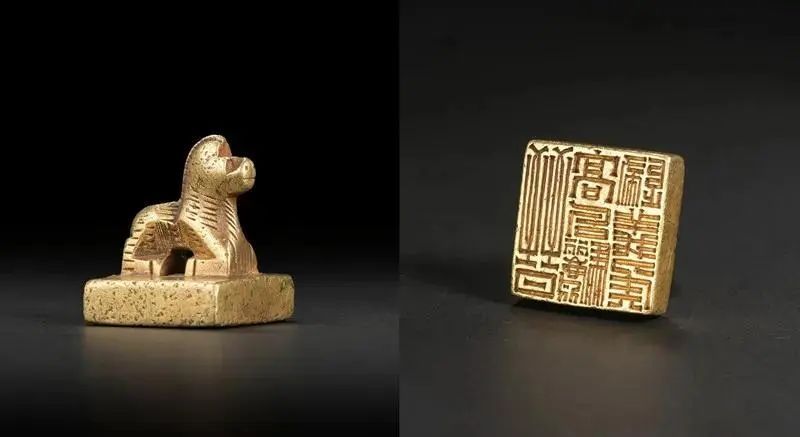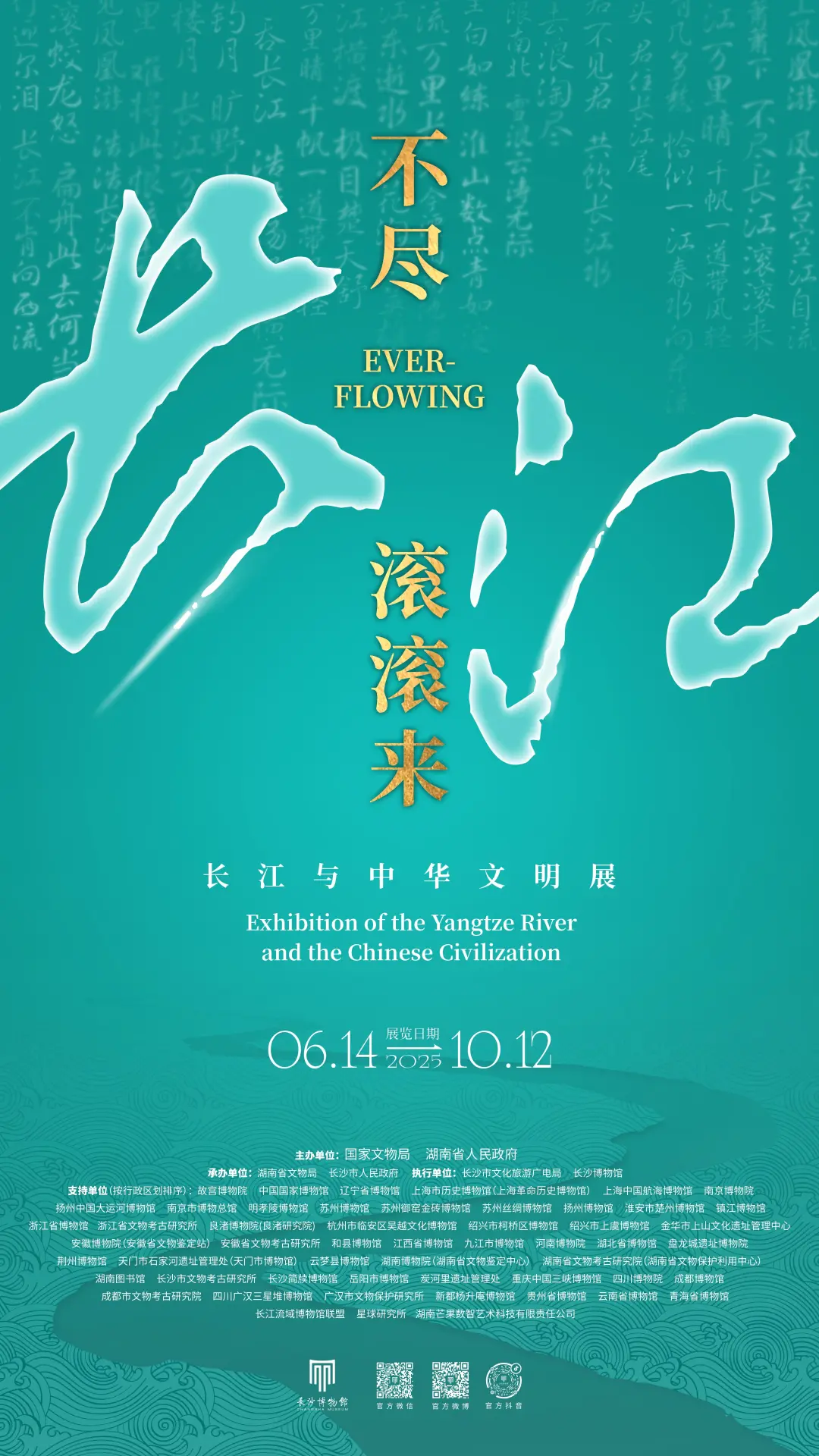
The Paper has learned that a gold seal with the inscription "Guiyi Marquis of Jin Gaoguli" that had been scattered for more than 1,700 years was recently donated to the Ji'an City Museum in Jilin Province, returning to its hometown. The "Gaoguri" in the seal refers to "Goguryeo". Ji'an City was the core area of Goguryeo in history. The "return home" of the gold seal has allowed the scattered cultural relics to return to their historical context.
Sun Weizu, an expert in seal carving research and researcher at the Shanghai Museum, said in an interview with The Paper on May 21 that this gold seal is a physical proof of the Western Jin Dynasty's rule over Goguryeo, and is of great significance to the study of the history of China's ethnic minorities and the history of China's territory.
The "Guiyi Marquis of Jin Gaoguli" gold seal is cast with the seal button and seal body in one piece, and the seal text is engraved. The table is nearly square, with a horse button, and the surface decoration is engraved after the seal button is cast. The total height is 2.8 cm, the seal table is 0.6 cm high, the seal surface is 2.4×2.3 cm, and it weighs about 88 grams, which is the standard specification of official seals of the Han and Jin dynasties. The "Gaoguli" in the seal text means "Goguryeo", and "Guiyi" means to obey and submit to justice. "Guiyi Marquis" was a title bestowed on minority leaders in ancient China, symbolizing their recognition of "submission".

Gold Seal of "Marquis Guiyi of Goguryeo, Jin Dynasty"
Historically, Goguryeo, as an ancient ethnic local regime in Northeast China, spanned three historical periods: the Han Dynasty, the Wei, Jin, Southern and Northern Dynasties, and the Sui and Tang Dynasties, and played an important role in the historical process of Northeast Asia. Since the Jin Dynasty, the central government has always had the tradition of issuing seals to the leaders of the minority regimes that have surrendered.
It is reported that the gold seal was scattered among private collectors in Japan before being donated to the Ji'an Museum. The gold seal was unveiled at the China Guardian Hong Kong Spring Auction on April 6, 2025, and was eventually bought by Ji'an entrepreneur Jin Mingnan and his wife Gao Jindan for HK$10.797 million (about RMB 9.96 million), and was recently donated to the Ji'an Museum free of charge.
Before entering the collection, the National Cultural Heritage Administration conducted a rigorous and scientific cultural relic identification. "After multidisciplinary cross-disciplinary comprehensive research, the authenticity of this Western Jin Dynasty gold seal has been confirmed from multiple angles, and its historical true appearance has been clearly presented. The shape, specifications, button shape, and processing techniques of the gold seal are exactly the same as those granted to other ethnic minorities by the Jin Dynasty during the same period."

Gold Seal of "Marquis Guiyi of Goguryeo, Jin Dynasty"
"When I saw this gold seal and print, I was very happy. It is new material in our field of ancient seal research. Copper seals from Buyeo and Goguryeo have been discovered before, but this is a gold seal, which is even more significant." Sun Weizu, an expert in seal engraving research and a researcher at the Shanghai Museum, said in an interview with The Paper. He said that the State Administration of Cultural Heritage and Jilin had also asked him for his opinion on this gold seal, and he also expressed his opinion that this gold seal is undoubtedly very precious. "I am very happy to see it return to the birthplace of its original nation."
Sun Weizu also said that Goguryeo, as a local regime of ethnic minorities in Northeast China in ancient times, was recorded in the "Records of the Three Kingdoms: Wei" and "Records of the Han Dynasty". In the eighth year of Emperor Guangwu's reign, the King of Goguryeo sent envoys to pay tribute, and was still under the control of the Central Plains until the Wei and Jin Dynasties. This seal is called "Guiyi", which proves that the tribe was canonized after submitting to the Western Jin Dynasty. The Han and Jin Dynasties gave official seals to the four barbarians, which was more than the system of the internal counties and kingdoms, and the kings and princes were granted gold seals. The "Wuhuan", "Xianbei", "Qiang" and "Di" Guiyihou seals unearthed in Inner Mongolia and Gansu are all like this.
The inscription "Guiyi Hou of Gaojuli in the Jin Dynasty" is carved, with even and neat strokes, square lines, clear and exquisite. Sun Weizu said that the inscription is also a very typical artistic style of the Western Jin Dynasty. Among the official seals granted to ethnic minorities in the northeast and northwest during the same period, it is a very exquisite one and a representative and high-level work in the seal art of the Jin Dynasty.
"This golden seal is solid physical evidence that proves that Goguryeo was enfeoffed by the Western Jin Dynasty in the Central Plains and became a frontier regime recognized by the Western Jin court. It is of great significance to the study of our history of ethnic minorities and China's territorial history." Sun Weizu said, "Its importance is no less than the significance of discovering a golden seal of a prince in the mainland."
"The gold seal is a physical witness to the Western Jin Dynasty's enthronement of Goguryeo." Wang Zhigang, professor at the School of Archaeology of Jilin University and director of the Goguryeo Bohai Research Center of Jilin University, also said in an interview with the media that there is no clear record of the Western Jin Dynasty's enthronement of Goguryeo in historical documents, and the excavation of the "Jin Goguryeo Guiyi Marquis" gold seal and several "Jin Goguryeo Shushan" bronze seals that have been unearthed before, together prove that Goguryeo was under the jurisdiction of the Central Plains dynasty in the early Jin Dynasty.

The inscriptions on the gold seal of "Guiyi Marquis of Jin Gaojuli" and the gold seals of "Guiyi Marquis of Jin Xianbei" and "Guiyi Marquis of Jin Wuhuan" discovered in the Xiaobazitan cellar in Liangcheng, Inner Mongolia in 1956
Wang Zhigang said that by comparing with the gold seals granted to other ethnic minorities in the Jin Dynasty, the "Jin Gaoguli Guiyi Marquis" gold seal is very similar to the "Jin Xianbei Guiyi Marquis" gold seal and the "Jin Wuhuan Guiyi Marquis" gold seal discovered in the Xiaobazitan cellar in Liangcheng, Inner Mongolia in 1956, as well as the "Jin Fuyu Guiyi Marquis" gold seal that was previously unearthed in terms of shape, specifications, seal button shape, and processing techniques. In terms of the font, shape, and style of the seal text, the "Jin Gaoguli Guiyi Marquis" gold seal is also consistent with the previously discovered copper seals of "Jin Gaoguli Rate of Good Yichang", "Jin Gaoguli Rate of Good Qianchang", and "Jin Gaoguli Rate of Good Baichang". Chen Genyuan, a researcher at the Xi'an Forest of Steles Museum and a member of the Xiling Seal Society, also believes that "the size, button system, seal content, and engraving craftsmanship of this seal are all typical characteristics of official seals issued to ethnic minorities in the Western Jin Dynasty."
Fan Enshi, deputy director of the Institute of China Borderland Studies of the Chinese Academy of Social Sciences, further revealed the history behind the gold seal in an interview with Jilin Daily - from "Guiyi Hou" to "Yichang", "Qianchang" and "Baichang", the Western Jin Dynasty's canonization of Goguryeo went deep into the grassroots units of the Goguryeo regime, indicating that the Central Plains dynasty had a very thorough jurisdiction over Goguryeo. This seal and the seals related to the tribute and canonization of Goguryeo that have been discovered in the past formed a complete chain of evidence, proving that Goguryeo was an ethnic local regime active in my country's northeastern border during the Han and Tang dynasties.
"Guiyi" means to submit to justice. "Guiyi Hou" is a title bestowed on ethnic minority leaders, symbolizing their recognition of "submission". Compared with previous copper seals such as "Jin Gaoguli Rateshan Yichang", the "Jin Gaoguli Guiyi Hou" gold seal is of a higher level, with more even strokes and more meticulous production. It condenses the ritual system of the Central Plains in a small space, with a rigorous layout like the latitude and longitude of the border, and the chiseling is strong like the bones of mountains and rivers. Every chisel mark not only shows the craftsmanship inheritance of "making tools with images", but also implies the civilization code of ethnic integration.
(Part of this article is based on relevant reports from the State Administration of Cultural Heritage and Jilin Daily)


